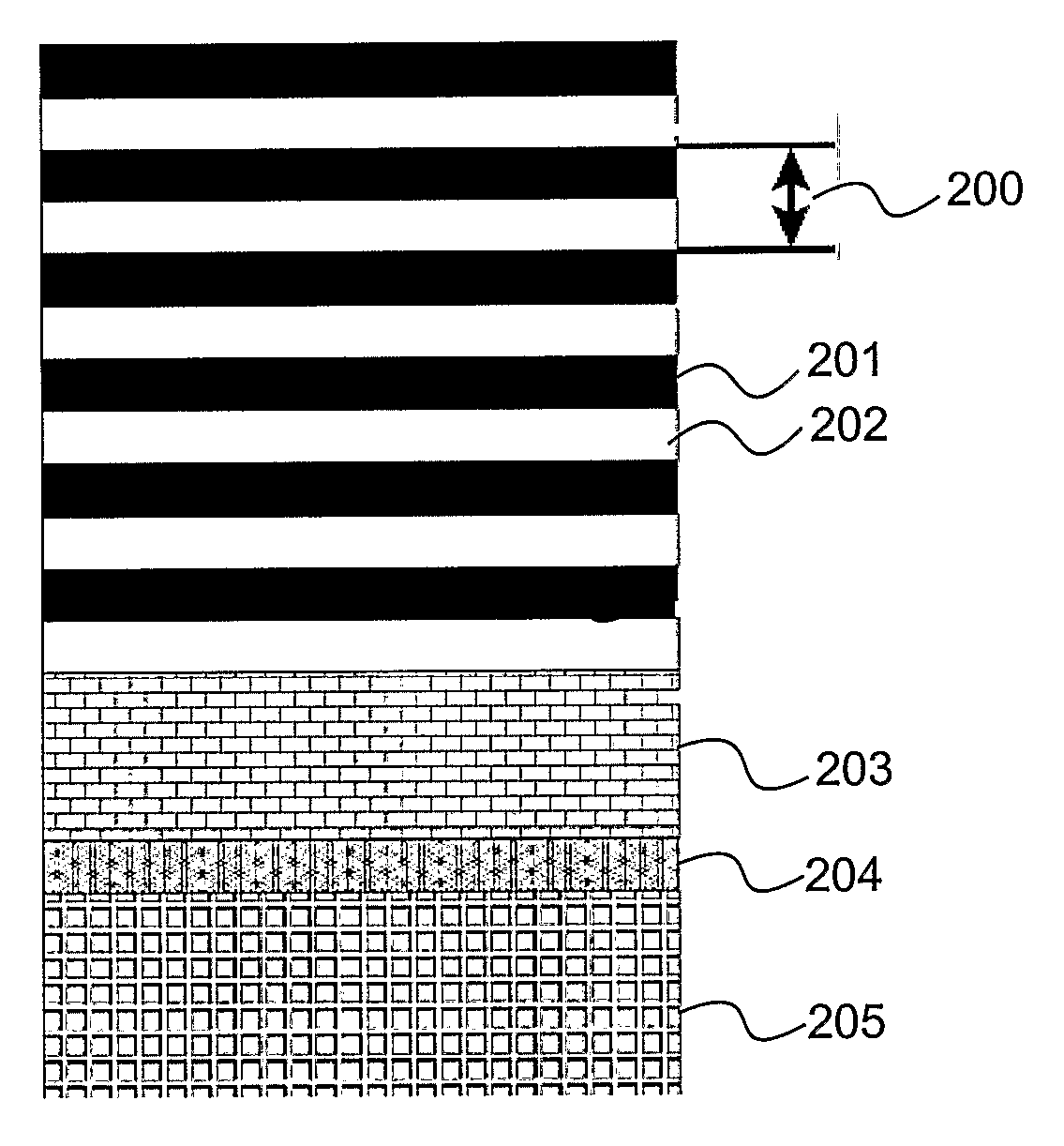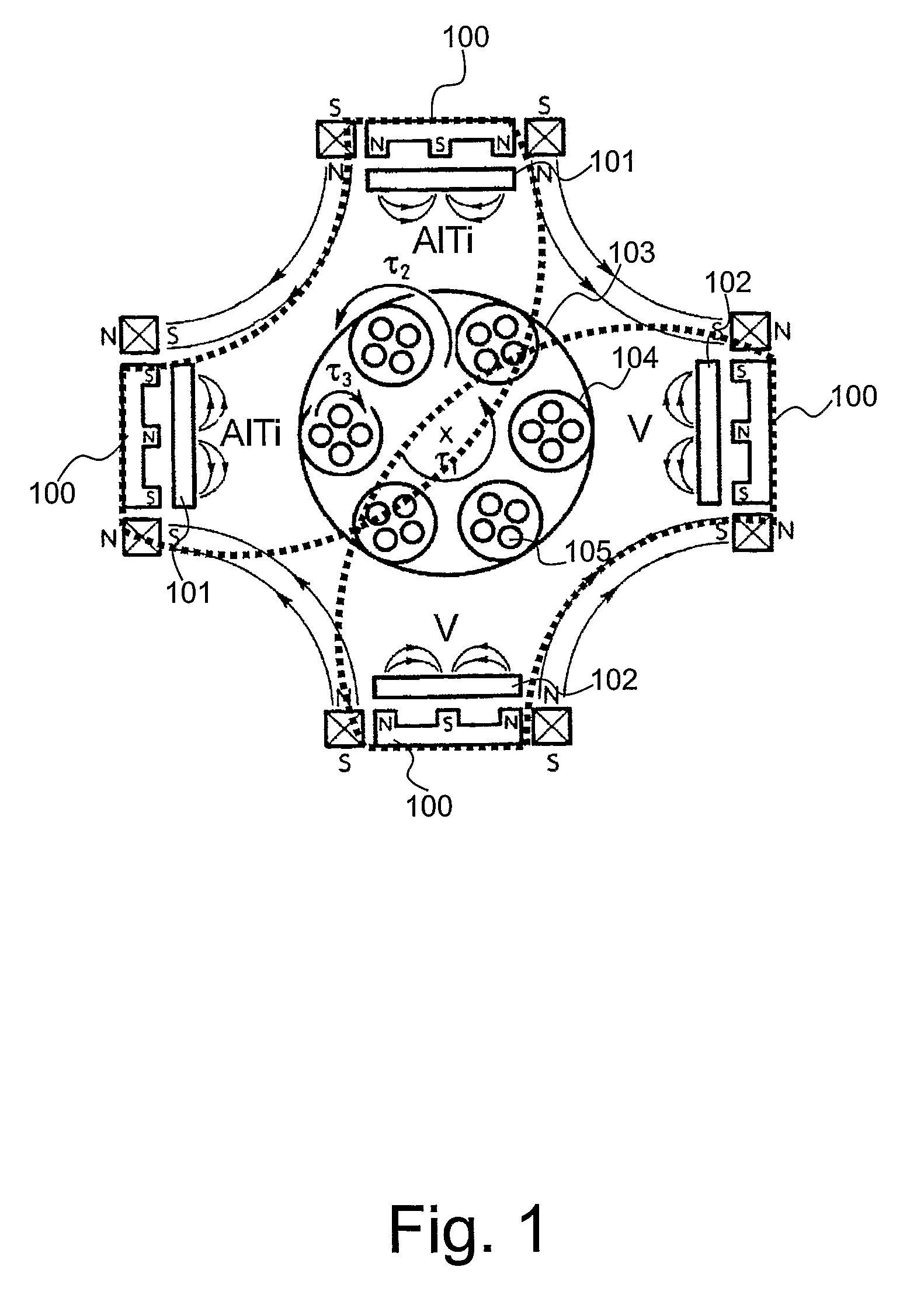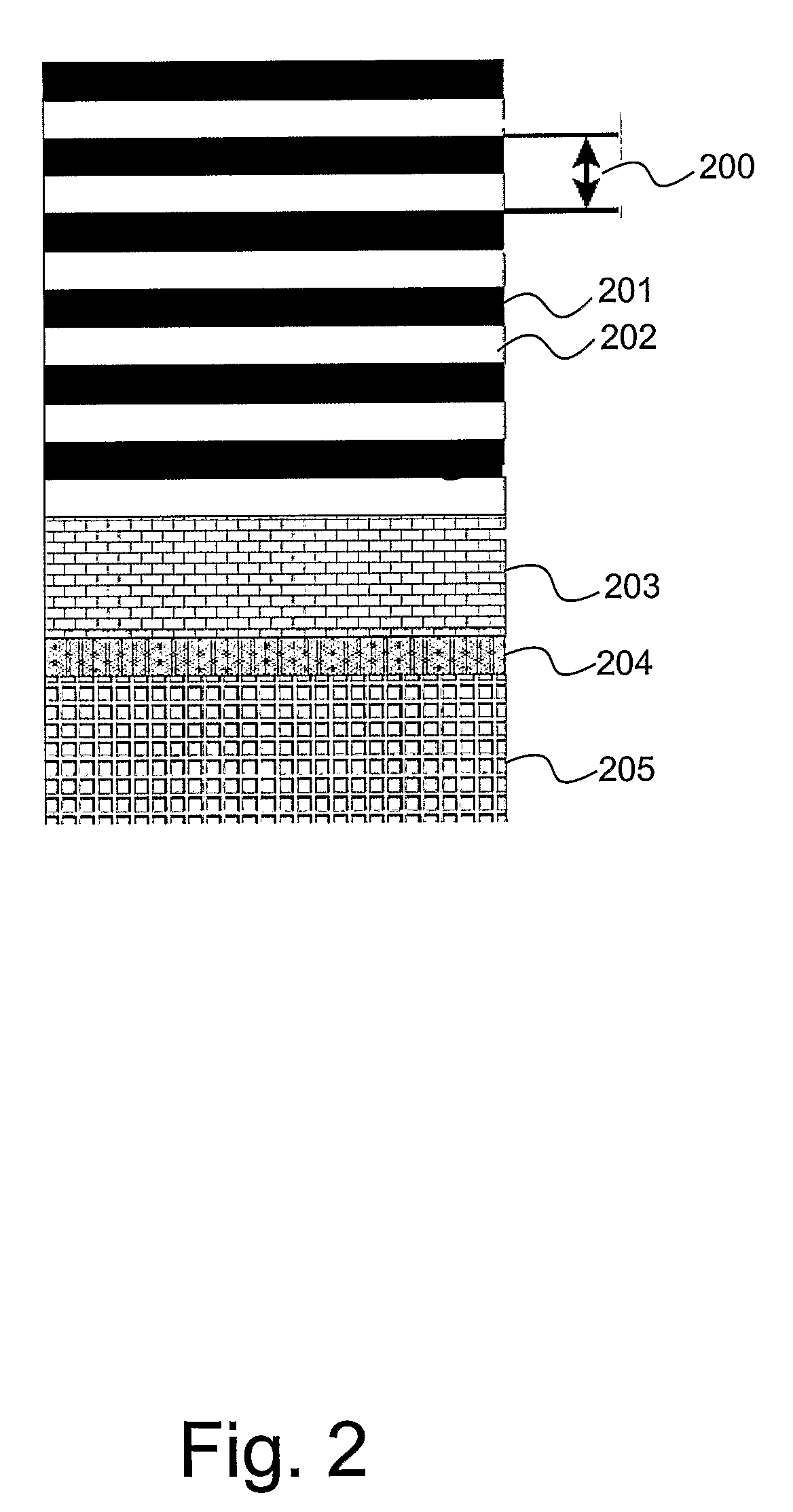Pvd Coated Substrate
a substrate and coating technology, applied in boring/drilling components, magnetic recording, electrical equipment, etc., can solve the problems of reducing the service life of tools, so as to achieve the effect of increasing the chemical inertness, high hardness, and low friction coefficien
- Summary
- Abstract
- Description
- Claims
- Application Information
AI Technical Summary
Benefits of technology
Problems solved by technology
Method used
Image
Examples
example 1
Nanoscale Superlattice Multilayer Coating
[0052]A deposition procedure for the production of a nanoscale, compositionally modulated, multilayer structured coating of (VMe)(CN) / (MeV)(CN), where Me is AlTi is described.
[0053]The (VAITi)(CN) / (AITiV)(CN) superlattice nanoscale multilayer coating is deposited by reactive sputtering of two pairs of AlTi 50:50 at. % and V 99.8% pure targets opposing each other in a common Ar+N2+CH4 atmosphere as illustrated in FIG. 1 herein.
[0054]The necessary carbon atoms can be supplied by other carbon containing reactive gasses such as C2H2 or by evaporation or sputtering of a solid graphite target.
[0055]The metal atoms in the film can be produced not only by various types of sputtering techniques but also by evaporation methods such as arc evaporation.
[0056]The nanoscale multilayer coating deposition process utilized in this example comprised three major steps: surface pretreatment (etching), base layer deposition and nanoscale multilayer deposition.
[00...
PUM
| Property | Measurement | Unit |
|---|---|---|
| thickness | aaaaa | aaaaa |
| thickness | aaaaa | aaaaa |
| thickness | aaaaa | aaaaa |
Abstract
Description
Claims
Application Information
 Login to View More
Login to View More - R&D
- Intellectual Property
- Life Sciences
- Materials
- Tech Scout
- Unparalleled Data Quality
- Higher Quality Content
- 60% Fewer Hallucinations
Browse by: Latest US Patents, China's latest patents, Technical Efficacy Thesaurus, Application Domain, Technology Topic, Popular Technical Reports.
© 2025 PatSnap. All rights reserved.Legal|Privacy policy|Modern Slavery Act Transparency Statement|Sitemap|About US| Contact US: help@patsnap.com



